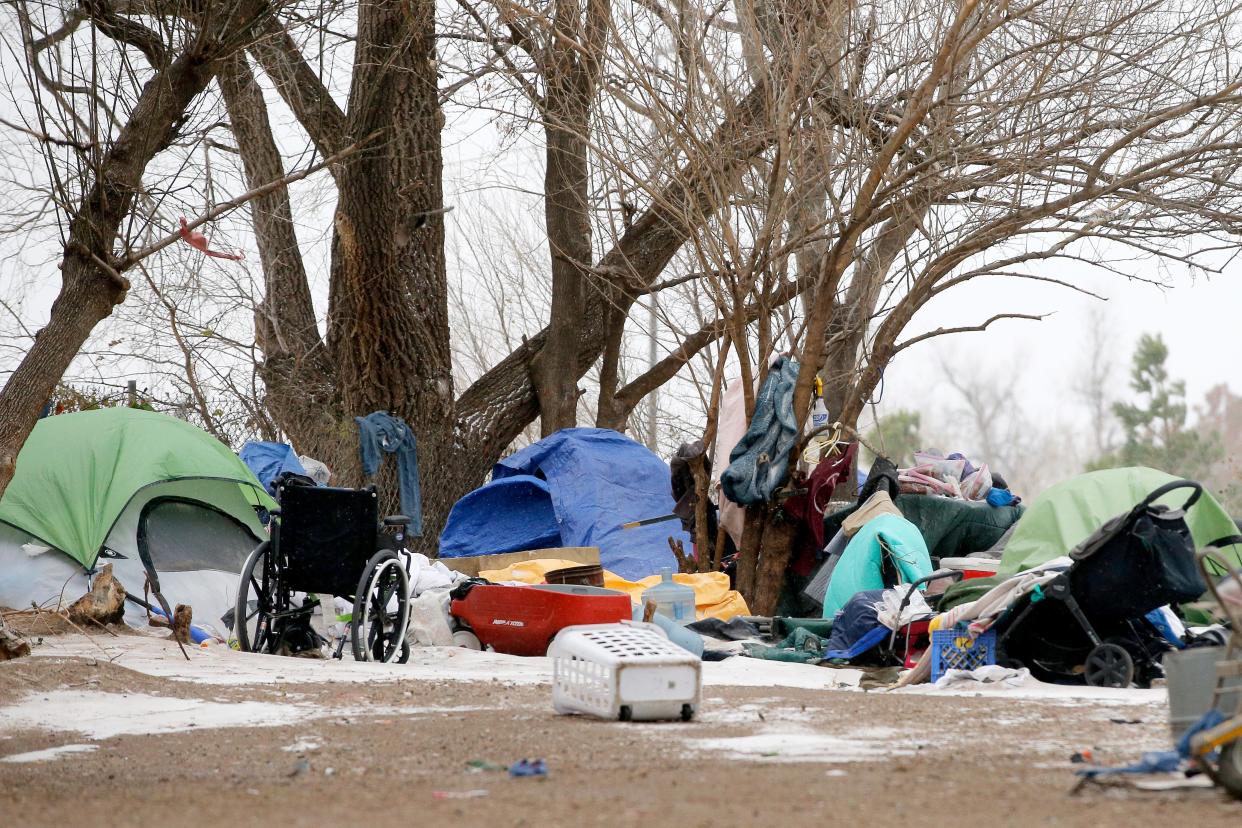Guest: Oklahoma City's unsheltered people are our neighbors, and they need our help

Last week, volunteers canvassed Oklahoma City for the annual Point In Time (PIT) count. A federal requirement, the count is a one-day census of unhoused individuals that provides valuable insight into the complex state of homelessness in our city. The count includes how many people are in shelters, transitional housing programs and how many are living outdoors.
There’s a perception in our community that the unsheltered, often these visibly unhoused individuals who are living outside, aren’t from here and aren’t working or willing to get a job. Some even believe that they’re being sent to Oklahoma City from other cities. This couldn’t be further from the truth.
Last year’s count revealed that 83% of the unsheltered individuals counted became homeless in Oklahoma and 48% were experiencing homelessness for the first time.
The count is only part of the story. It doesn’t show how many of the unhoused in our community are employed. A national study published by the University of Chicago in 2021 estimates that 53% of people living in homeless shelters and 40% of unsheltered people were employed either full- or part-time.
There are leaders in our community and service providers, like Homeless Alliance, City Care and others, who work to provide shelter and services for those who are already homeless. But we also need leaders looking at policies and creating changes to systems that are pushing so many to become homeless.
The count also doesn’t include working families who are motel homeless, possibly due to evictions on their record, lingering debt, or because they’re unable to afford a deposit. It doesn’t include individuals who are incarcerated, in treatment facilities, in emergency rooms, or those who are couch surfing with family or friends.
Many factors contribute to an individual or family becoming homeless. For example, in Oklahoma City, rents have increased 34% in the last year. Oklahoma also has the third-highest rate of corporate landlords. Many of these are out of state corporations who are taking advantage of Oklahoma’s lax tenant protections and are responsible for 89% of evictions. We lack emergency, low-barrier shelter beds — in fact, we lack adequate shelter in general. According to the Oklahoma Policy Institute, our state is so far behind on simply having enough housing that we would need 70,000 rental units to meet the shortage.
We need leaders who will work to create more affordable housing and keep large corporate landlords from using our court system for unfair mass evictions of families. We need to start viewing unhoused individuals as members of our community, neighbors, who need our help.

Sue Ann Arnall is an Oklahoma City-based philanthropist.
This article originally appeared on Oklahoman: Oklahoma City's unsheltered people are our neighbors, need our help

